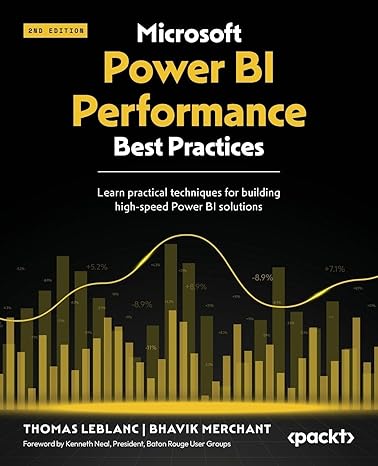I was asked to do a review of the book Microsoft Power BI Performance Best Practices 2nd edition (Amazon link), which means I got a copy for free. The book is written by Thomas Leblanc and Bhavik Merchant and published by Packt.
As the title obviously implicates, the book aims to give you a set of best practices regarding Power BI performance, but in the broadest sense possible. The book will not only talk about DAX or that you shouldn’t put too many visuals on one page, but it also explores capacity management, data modelling (star schema all the things!), the benefits of a performance governance framework, DirectQuery & Direct Lake performance, Power Query folding and so on. The book talks about performance in every layer of a Power BI architecture.
With about 320 pages, the book is a compromise between high-level overviews and deep technical content. If you want to know everything about DAX performance tuning, this probably isn’t the book for you (there is a book for that, it’s called The Definitive Guide to DAX and it’s over 700 pages long). However, the book will set you on the right path. It’s an excellent book for people who have a bit of experience in Power BI and who want to deepen their knowledge, or at least want to know what they should take into account regarding performance when they start a new Power BI project.
I think the book is nicely written, it has decent examples and there were definitely some interesting tips that I can use. However, sometimes I could notice the book was written by two different authors. There was some redundant information (for example, the Fabric Capacity Metrics App is explained in two different chapters. On the other hand, that monstrosity needs all the explaining that there can be). There were also some editing mistakes (some typos, some incorrect links and even a section missing). But all in all I enjoyed reading the book.
One thing I would have liked more is additional reading material. Sure, there are links to blog posts or official documentation, but there are no links to other books. Even if some books are the “de facto” standard in the industry (I mean, not a single book of the Italians mentioned in a chapter about DAX?). Only one chapter has a “further reading” section at the end. If the book doesn’t dive deep in the technical details – which again, this is fine, otherwise this book would have been at 2,000 pages – at least provide more reading materials. I was impressed though with the inclusion of some Fabric content, even this is all still quite new and changing very fast.
I’d recommend this book for people who are still somewhat in the start of their Power BI journey, so they know what they can focus on when delivering Power BI project. Seasoned Power BI professionals should know most of the stuff covered in the book, but it’s always nice to have your knowledge confirmed and to plug any holes that might exist.
------------------------------------------------
Do you like this blog post? You can thank me by buying me a beer 🙂
